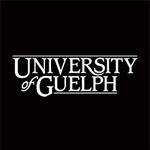What kind of postcard is this?
Unfortunately, this postcard lacks any information about the creator and publisher of the postcard, as well as the date it was created. However, since the postcard is a menu featuring distinct Scottish cuisine one may hypothesize that the creator and publisher were both based in Scotland and that the creator had a background in culinary arts. Furthermore, since this postcard is not of a landscape or cityscape, the postcard’s orientation is in portrait and unlike the other postcards in this exhibit. The portrait orientation also aided in visualizing the postcard as an actual menu.
By analyzing the text on the postcard, it is determined that the language written on the postcard is Scots, a long-established German variety language which was spoken in the Scottish Lowlands. Additionally, the ending verse of the “Selkirk Grace” and the chorus of the Scots language poem of “Auld Lang Syne” written at the top and bottom of the postcard respectively, it is evident that this menu is inspired by famous Scottish poet Robert Burns who wrote both pieces of literature.
The menu could also depict the various dishes at a ‘Burns Supper’ which is the celebration of the poet’s life. The emphasis on Burn’s literature as well as the traditional dishes listed on the postcard during the celebration of his life may conclude that the postcard is a tribute to the late poet and lyricist. In another view, it may just be a patriotic advertisement of Scotland itself as it consists of dishes originating from Scotland, quotes the national poet of Scotland, and is written in the native Scots language.



